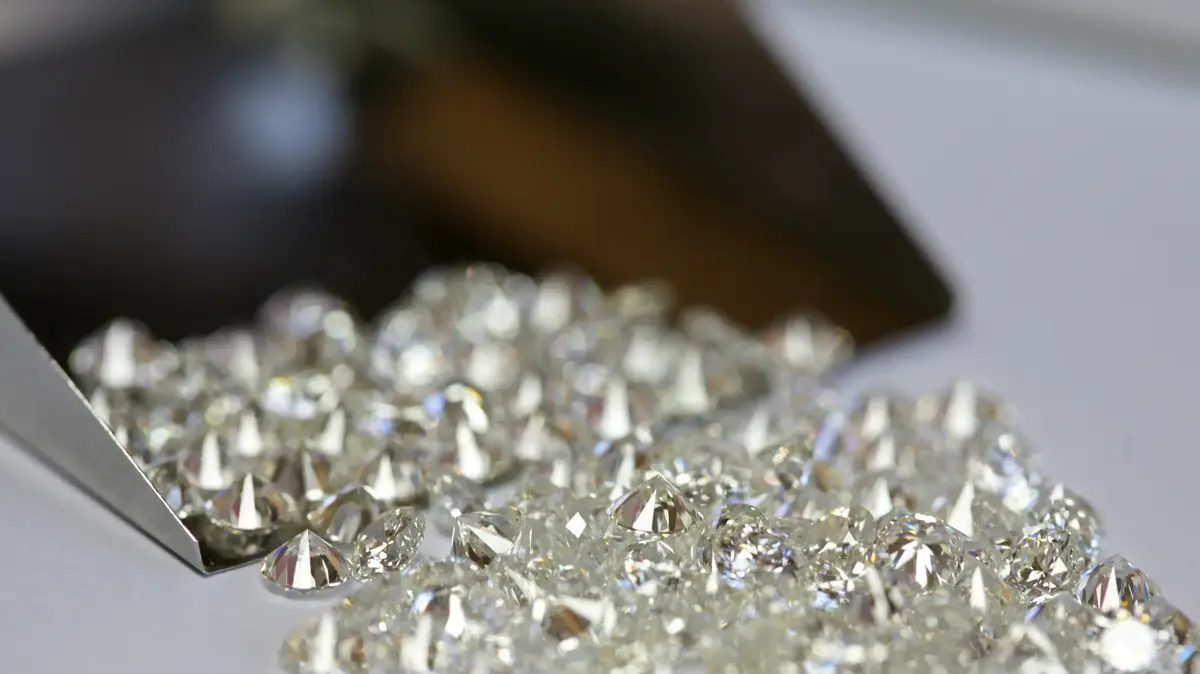Branch in difficulties/courtesy of the Israeli Diamond Residence
The geopolitical changes, the war in Ukraine, a decrease in the scope of consumption in China and global economic uncertainty, these are the main reasons that cause a continuous upheaval in the diamond trade in the world, including in Israel, which is under a cloud of depression due to the war of iron swords.
At the same time, crises create an opportunity: diamond prices drop by tens of percent and consumers are getting paid.
Contrary to the hopes planted by the diamond and jewelry dealers, the year 2023 did not bring with it the correction they wished for and many wonder if the current year will end differently?
According to the data of the Ministry of Economy and Industry, the net import of rough diamonds to Israel, until the month of November 2023, amounted to approximately 843 million dollars, this is a decrease of approximately 50% compared to the corresponding period in 2022. The export data also indicate a slowdown in the activity of the industry: The net export of rough diamonds recorded a drop of 57% compared to the same period last year and amounted to NIS 637 million.
The polished diamond export segment was also disappointing: there was a sharp decrease of about 3.37 billion dollars and at a rate of -9%.
Apparently, the explanation for the shuffling in the diamond market in Israel lies in the war of iron swords, but the reality is more complex: the deep processes that the global diamond industry is going through, continue to give their signals and affect the volume of demand in the world for natural diamonds.
To understand what is going on in the diamond industry, you have to go back about two years.
shook the markets.
The war in Ukraine/Reuters
The year 2022 was a challenging year for the global diamond industry in general and the Israeli one in particular.
This year began with the war in Ukraine and the sanctions on Russian rough diamonds (which make up about a third of the world's rough diamond market) and continued with signs of a global recession and global inflation.
In total, in 2022 the net import of rough diamonds to Israel amounted to approximately 1.82 billion dollars, a decrease of approximately 10.5% compared to 2021. The net export of rough diamonds in 2022 amounted to approximately 1.52 billion dollars, a decrease of about 15% compared to the year 2021.
However, the situation could have been much worse: industry officials noted at the time that the situation could have been much worse. As mentioned, the war in Ukraine shook the global markets. The Russian mining giant Alrosa, whose shares are also held by the government Russia, which supplies about a third of the world's raw gemstones, suffered a blow: sanctions imposed by the American government led to a panic in the industry and a partial suspension of trade with it (which became an unequivocal ban imposed about a month ago).
Bottom line, the eyes then turned to 2023. "Increases in jewelry sales in the US" and the re-opening of the Chinese market after the removal of the Corona restrictions are important news for the year 2023", stated in the review of the Ministry of Economy and Industry.
But the past year, as noted above, also ended with numbers that disappointed those involved in the industry." "
It's been a year, its wars, its ups and downs, and its troubles," a senior official in the industry in Israel told us last December, while sighing. "I'm worried." Indeed, the month of January The last one ended with a decrease of approximately 26% in the volume of rough imports. The Ministry of Economy's figures regarding the volume of polished diamond imports also do not put a smile on the faces of stock market traders: a decrease of approximately 25%. And what about exports? The volume of rough exported recorded A decrease of about 47% and the polished: about 21%.
More in Walla!
The intriguing process of recycling metal packaging
In cooperation with the Tamir Recycling Corporation
A booming market.
Lab Diamonds/ShutterStock
And how does all of the above serve the consumer in Israel?
For example, the couples getting married?
A drop in prices, at rates that even reach 40%, compared to the period after the Corona, when it comes to diamonds that are considered 'cheap' weighing between 1 and 4 carats.
Alongside all this, the changes in the industry cannot be explained without referring to the synthetic 'laboratory diamonds'.
In 2020, their global sales amounted to about 3 billion dollars, but in about two years, it jumped to an amount of about 10 billion dollars, nibbling on the sales volume of natural diamonds.
Also the price of laboratory diamonds, which has dropped by dozens of percent in the last two years, makes this alternative more and more attractive.
The entry of the giant diamond corporation 'De Beers' into the field also legitimized more traders to enter it, which increases the supply and lowers the prices.
At Green Diamonds, a company that manufactures and markets synthetic diamonds, they conclude, "No one eulogizes the natural diamond industry, but more and more consumers are interested in maximizing the purchase and getting more for less money. Therefore, the trend of biting on natural diamonds is expected to intensify in the coming years."
The price reductions do not only apply to natural diamonds, but also the price of laboratory diamonds is decreasing.
Five years ago, the price of engineered diamonds was 20% lower than natural diamonds, but now it is around 80% lower, due to falling prices and production costs.
It is estimated that prices will continue to fall due to a surge in supply.
However, Rowley estimates that the low prices will make these diamonds less attractive for engagement rings.
"In the end, there are different products and the finish and rarity of natural diamonds are on a completely different level."
More on the same topic:
diamonds

